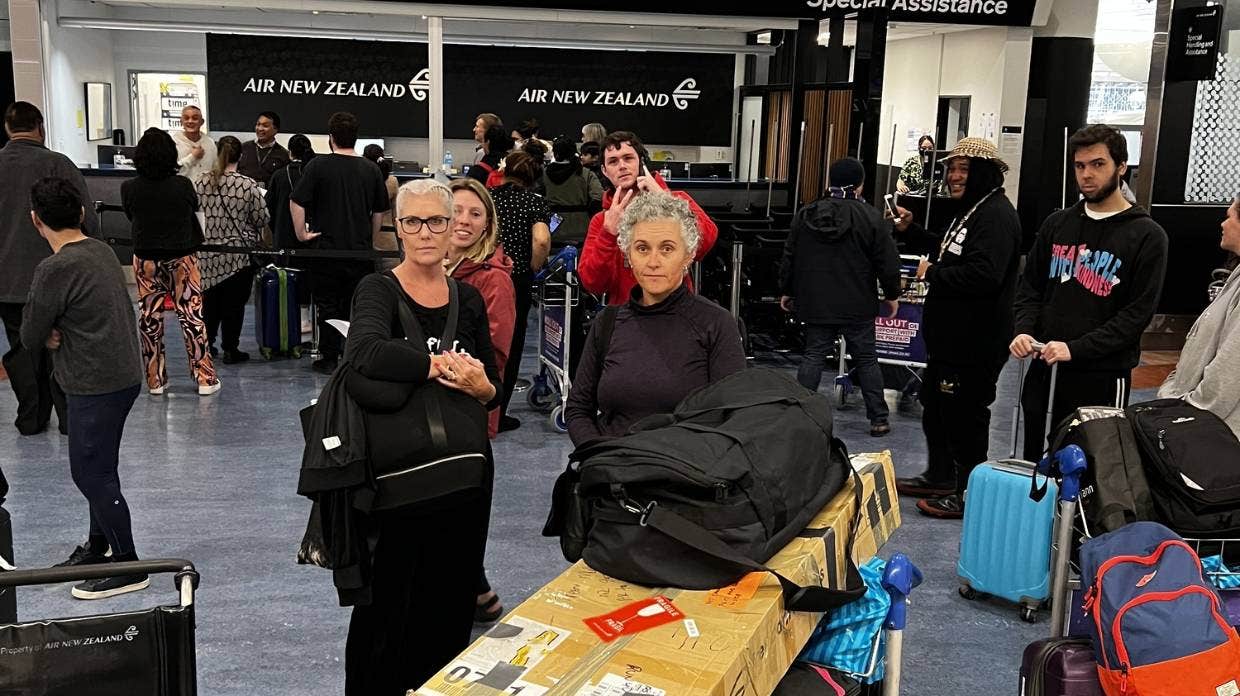Air NZ ‘recovery flight’ to Raro set up after plane hit by lightning
Thursday 22 June 2023 | Written by Supplied | Published in Economy, National

Air NZ passengers heading to Rarotonga are disappointed over the lack of communication after their flight was struck by lightning. Stuff (TREENA MULLINS/SUPPLIED)/23062110
An Air New Zealand flight destined for Rarotonga had to turn back after the plane was struck with lightning early yesterday morning.
Travellers on flight number NZ942 from Auckland told Stuff that while they understood the lightning strike was unpredictable, they were frustrated by Air NZ’s lack of communication.
Now, Air NZ have set up a “recovery flight” to get disappointed jet-setters to the Cook Islands later tonight (Cook Islands time).
Passengers were in the air for just over an hour-and-a-half, taking off at 6.22am and landing at 7.55am (NZ time).
“The aircraft has now landed back in Auckland, where it will undergo standard engineering checks,” an Air NZ spokesperson said just after 8.30am.
Several unhappy passengers contacted Stuff to tell stories of missed celebrations and extra costs.
At 2pm, Air NZ announced they’d set up a “recovery flight” for Friday afternoon (Thursday) to get customers to Rarotonga “as soon as we can”.
“Customers will be rebooked onto this service this afternoon if they are currently without a booking. If customers have rebooked onto a later service and wish to be moved to the new recovery service, please contact the airline,” the spokesperson said.
‘Poor communication’
An incoming passenger, a contractor who has an urgent job to complete in Rarotonga, told Cook Islands News that they were advised of the flight cancellation “pretty much straight away after the lightning strike”.
Speaking from Auckland, the passenger said the cancellation had caused a “big inconvenience for our deadline”.
“Passengers seemed fine but the communication is pretty poor really.”
The passenger received an email from Air NZ team confirming that a recovery flight has been scheduled to depart Auckland this afternoon.
The flight will depart Auckland at 2:15pm and is scheduled to arrive in Rarotonga at 8:05pm.
“We truly appreciate your continued understanding following the diversion of our service to Rarotonga this morning, NZ942,” the airline said.
Aucklander Treena Mullins, off to Rarotonga to celebrate her 50th birthday, said about 200 passengers were left waiting around at a ticketing desk after the flight landed, upset with the poor communication from NZ’s biggest airline.
Travellers received an email as they disembarked the plane, she said, telling them they would be rebooked on another flight, but warning that service over the next few days was “extremely limited”.
Mullins said while the airline can’t stop situations like lightning strikes, the way they’ve handled passengers is disappointing.
“It’s just poor communication – there is none.”
After collecting their bags, passengers from the cancelled flight asked Air NZ airport staff to provide information on when they would get more information, Mullins said.
Disappointed holidaymakers were there was “nothing they could do”.
Passengers around Mullins from out of town were left wondering if they should camp out at the airport.
At about 10.30am, two-and-a-half hours after they landed, travellers received text messages saying those from Auckland should go home and wait for further information.
People from out of town should talk to Air NZ staff about their travel, the texts read.
Mullins said she saw the lightning strike, and then they felt turbulence that was different to what you’d feel on a normal flight.
Tim Johnston said there had been absolutely no information from Air NZ on the matter.
The airline threw them “under the bus” and “couldn’t have cared less,” Johnston said.
“Up to us to fend for ourselves and find alternative accommodation and meals at our cost.”
Lightning strikes are not uncommon, Air NZ said.
“Aircrafts are designed with this in mind and our pilots train for this scenario.”
Flight tracking shows the aircraft didn’t make it very far before it was hit.
The plane flew in circles a few times over the Hauraki Gulf, before coming back to land in Auckland.
The aircraft was an Airbus A321 – which is a twin jet plane.
Heavy rain and thunderstorms battered parts of the North Island overnight, with more rain expected throughout Thursday.
Auckland, about and north of Whangaparāoa, had “quite a lot of thunderstorm activity” and saw between 15ml to 30ml of rain overnight, according to MetService.
Niwa said there was nearly 60,000 lightning strikes in the Tasman Sea and near northern New Zealand on Wednesday (NZ time).
- Ryan Anderson (Stuff)/CI News














































